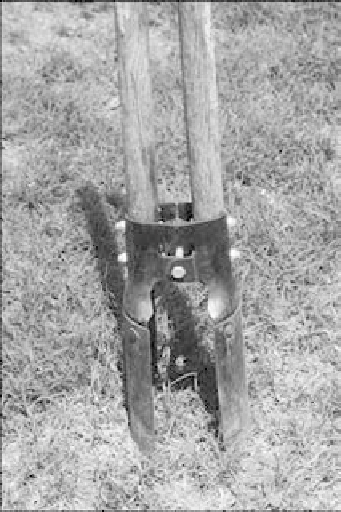Agriculture Reference
In-Depth Information
Don't try to dig a posthole when the ground is too wet, or your hole will fill with water.
We use a posthole digger to set clothesline posts, fence posts, and even corner posts for sheds
and stationary outbuildings. I've also used the posthole digger for deep-rooted asparagus crowns
because some of the roots are 2 feet or longer. It is handy for planting deeply planted bulbs in a
pinch, too, and when working as a team, my husband Sidney and I planted 100 bulbs in an hour.
He'd grab a pinch of soil, lift it up, I'd place in the bulb, and he'd replace the plug of sod right
back where he grabbed it from.
It would be a lot harder to set a post without a posthole digger.
Make sure the moveable pieces of the jaws are well made. Cheap metal pins will break from the
strain and leave you with two useless halves. The handles must be comfortable to use or you'll soon
tire out. Be sure that your blade edges are sharp! I cannot stress this enough. File your posthole
digger edges after every use. It takes just a minute, and you'll always have a fresh, sharp edge.
thOrny MatterS
Always check for the placement of underground wires, gas lines, or water lines before digging around in
your backyard. A quick call to your utility companies can save a great deal of hassle—or even your life.
















